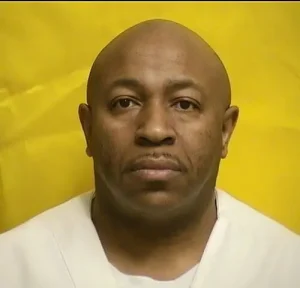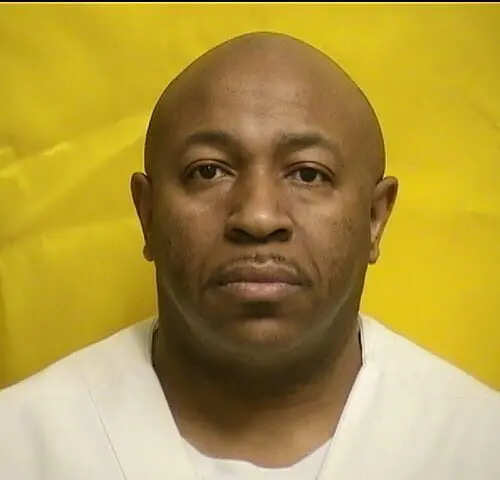Timothy Coleman would be sentenced to death by the State of Ohio for the murder of Melinda Stevens
According to court documents Melinda Stevens was set to testify against Timothy Coleman in a drug trafficking case. Coleman would fatally shoot Stevens
Timothy Coleman would be arrested, convicted and sentenced to death
Timothy Coleman Photos

Timothy Coleman FAQ
Where Is Timothy Coleman Now
Timothy Coleman is incarcerated at Chillicothe Correctional Institution
Timothy Coleman Case
On the night of January 2, 1996, Melinda Stevens was shot to death in an alley behind Riddle’s Ribs in Springfield, Ohio. Timothy Coleman, appellant, was convicted of her aggravated murder and sentenced to death.
During the previous summer, Stevens had worked as a confidential informant for the Springfield police and made controlled purchases of drugs from suspected drug dealers. On three separate occasions, Stevens made purchases of crack cocaine from Coleman, which were observed and recorded by the police.
As a result of these sales, a grand jury indicted Coleman in September 1995 for aggravated trafficking in cocaine and associated possession offenses. Stevens was a material witness to these offenses, but her identity was not listed in the indictment. Colement pled not guilty to these charges.
While in jail awaiting trial for these charges, Coleman told his cellmate, James R. White, that he had discovered that Stevens was the one that “got him busted” and that “if he [Coleman] got out on bond, he was going to take care of her.” According to White, Coleman stated that he had a newborn baby, was facing fifteen to forty-five years on the pending drug charges, and “couldn’t * * * do that much time in the joint.” Coleman had known White for years and asked him to “take care” of Stevens if White got bailed out first. However, Coleman was released first on October 12. Another inmate, Donovan Hayes, testified that he heard Coleman tell White “That if it was her [Stevens] that was responsible for him being here, he would have to do something to her.”
White was released from jail in mid-November and testified that Coleman again asked him to help “take care” of Stevens. They talked about burning down Stevens’s house or the possibility of White shooting her. Early on January 2, 1996, Coleman saw White twice and told White he would pick him up that evening to take care of Stevens, but Coleman never showed up. On January 3, after Stevens had been killed, Coleman told White that “he took care of his business.”
Christopher Holtz testified that he saw Stevens and Coleman on the evening of January 2, 1996 around 7:00 or 8:00 p.m. at Riddle’s Ribs, apparently buying takeout food. Holtz recalled that Coleman was wearing a flannel-type shirt and that Stevens and Coleman left Riddle’s together around the same time Holtz did. Holtz last saw the two alone in a nearby alley. The weather that
evening was cold, windy, and snowing. As Holtz was walking home, he heard shots.
Around 7:25 p.m., police and paramedics responded to the alley behind West Pleasant Street near Riddle’s Ribs, the scene of a shots-fired report. They found Stevens lying face up with no pulse or respiration and only minimal heart activity. Although the paramedics took Stevens to the hospital, the coroner later concluded that Stevens had died at 7:20 p.m. on January 2, 1996. Icy rain had fallen that evening, followed by heavy snow and strong winds, thereby hampering investigative efforts.
Coleman frequently visited the house of Fayette Strodes in Springfield. Strodes’s granddaughter, Dana, had a child by Coleman, and Fayette’s son, James Strodes, was Coleman’s friend. Prior to January 2, 1996, Coleman told Fayette several times that “he was going to kill [a] black bitch” to whom he had sold drugs because she was a “drug informant.” Vera L. Strodes, Fayette’s daughter, also recalled Coleman discussing his legal problems, saying, “he was going to kill her.”
Hope Strodes, Fayette’s granddaughter, recalled that Coleman visited the Strodeses’ house early on the evening of January 2, and asked her for some bullets. Hope told him that there was a box of bullets on a shelf. Coleman took some bullets, showed Hope a silver gun with a clip, and said, “I’m going to go take care of a bitch that set me up.”
Around 7:30 p.m. that same evening, Coleman stopped in for a few minutes to see Gaskins and told her, “I took care of my business.” When asked what he meant, Coleman replied, “Bloop, bloop, two to the back of the head * * *. The bitch fell like a rock,” while demonstrating at the same time what happened by physically falling to the floor. After January 3, Coleman again talked with Gaskins and disclosed to her that the murder occurred in an alley behind Riddle’s Ribs and that he had slowed down while walking in order to shoot Stevens from behind.
After Coleman left Gaskins’s house that night, he went back to the Strodeses’ residence. Hope, Vera, and Fayette all testified that Coleman did not look normal and was nervous. Vera testified that he was wearing a flannel shirt that had cockleburs on it. Coleman told Fayette that he “had took care of it.” When she asked what, he said “Melinda” and “twice in the head” because he “couldn’t do that many years.”
On January 3, 1996, police interviewed Coleman after advising him of his rights. Coleman asserted to police that sometime after 7:00 p.m. on January 2, Stevens came to the house of Coleman’s daughter, next to Riddle’s Ribs, and asked him for money to buy food for her children. Coleman told her he was not going to give her money, but that he would walk over there and pay it for her. After going to Riddle’s and paying for the food, Coleman stated that he left, did not see Stevens again, and did not know she had been murdered.
Coleman later talked with Vera Strodes about the fact that people on the street were saying that he shot Stevens. At first, Coleman denied shooting Stevens, but later admitted to Vera that he “did take the bitch out.” While in jail awaiting trial, Coleman described the murder to fellow inmate Antwan Warren, revealing that while he was walking out of the restaurant with Stevens, he “slowed down his step and shot her.”
Dr. Robert Stewart, a forensic pathologist, concluded that Stevens died as a result of two gunshot wounds, one to the back of her head and one to the base of her neck. The first bullet stopped at the front-left side of her brain. The second bullet shattered the first vertebra and severed her spinal cord, traveled upward into the sinus cavity, and lodged just under the cheek skin.
Because the weather stayed cold until mid-January, ice and snow remained on the ground, hampering efforts to secure physical evidence at the murder scene. One officer estimated that on January 3, there were two inches of ice and four inches of closely packed snow in the alley. Eventually, on January 17, police officers found two spent .380 caliber shell casings near a bloodstain remaining in the alley.
A forensic expert identified the two bullets removed from Stevens’s body as either .380 caliber bullets fired from an automatic or semiautomatic firearm, particularly either a Colt government model or a Davis P-380. The Davis P-380 comes either in steel or chrome models. Gunpowder residue on Stevens’s clothing indicated that she had been shot from less than four feet away.
In May 1996, Coleman shared a prison cell with Steven L. Kasler, an inmate at an Ohio correctional center. Coleman told Kasler that he was awaiting trial for killing a drug informant named Melinda Stevens, and that he thought “if he killed her * * * he could beat his drug charges.” Coleman said he shot Stevens twice in the back
of the head using a Davis P-380. He also told Kasler that he shot her in an alley under “pretty severe, blizzard conditions” because he thought the weather would hamper the investigation. He then disclosed to Kasler that he had gotten rid of his gun and hidden his clothes in a doghouse in Fayette’s back yard. In fact, police never found the murder weapon, but did recover from the Strodeses’ doghouse a tennis shoe and a flannel shirt identified as clothing that Coleman wore on January 2.
Coleman was indicted in March 1996 for the aggravated murder of Melinda Stevens with prior calculation and design. Count I of the indictment contained a death specification that Coleman murdered Stevens, a witness to an offense, to prevent her from testifying in a criminal proceeding in violation of R.C. 2929.04(A)(8). Count I of the indictment also contained a firearm specification in violation of R.C. 2929.71. Furthermore, the grand jury indicted Coleman for possession of a firearm while under a disability.
The trial jury found Coleman guilty on all charges. Following the penalty phase hearing, the jury recommended the death penalty, and the trial court sentenced Coleman to death.
